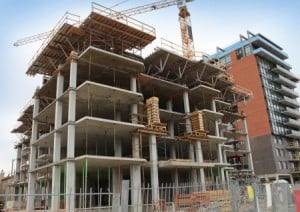NMHC Special Report: Finding Value in Value-Add

San Diego—Following years of higher-than-expected growth, the multifamily industry began to cool in 2016. Rents decelerated, interest rates popped following the presidential election and construction costs increased, leading many multifamily insiders to reconsider their growth strategies as the current cycle progresses.
As the top multifamily professionals descended on San Diego for the annual NMHC Apartment Strategies Outlook conference, one of the main strategies offered was value add in specific growth markets.
Construction costs rise
The image of amenity laden multifamily communities often brings to mind a brand new urban high rise, yet as construction costs continue to accelerate, developers and investors are looking elsewhere to meet the needs of their residents. Enter value add. Rather than take new projects out of the ground in areas with high land and development costs, firms are targeting class B and class C assets that can be remodeled with upgrades such as new countertops, windows and a redesigned gym or meeting space.
Sustainability initiatives are another way developers and owners are driving value added rent growth. Millennials value environmental stewardship more than any other generation, and are interested in living in sustainable communities despite potential increased rents. Enhancing the energy efficiency of appliances and fixtures is a quick update that drives demand for older properties.
Demand is high and not going anywhere
Despite the cycle-high supply pipeline demand for multifamily remains elevated throughout most of the country. While a handful of markets may experience some softness due to recent hyper supply, the majority of the country has outsized demand for housing. In years past, some of the housing demand has been accounted for by building single family homes, however single family home construction is not keeping pace this cycle.
Without the single-family stock, renters continue to turn to apartments for their housing needs, and it’s not just Millennials who are moving in to multifamily. Boomers and Gen Y are choosing location and lifestyle over suburban size and space, drawn by easy access to work and play options, and new amenities available in the apartment community. As urbanization continues, renters are actively pursuing remodeled and updated units.
Uncertainty looms
While optimism was apparent throughout the NMHC conference, uncertainty also emerged as the biggest threat facing today’s market. The extended recovery and the unclear results of the new administration and congress have left many in the multifamily industry hesitant to develop new properties. Access to capital has also tightened, as interest rates rise and firms take conservative approaches when underwriting rent growth.
Value add renovations offer a strong alternative to new development, as the projects are less labor and cost intensive, but can provide competitive market rate rents as a result. Market and submarket selection remains crucial, as external factors will also impact the success of a value add initiative.
With homeownership at recent lows, strong interest in urban and near urban living, and an uncertain lifespan of the current cycle, value add continues to be a key strategy for developers and owners in today’s multifamily market.
Source: multihousingnews.com















 Accessibility
Accessibility